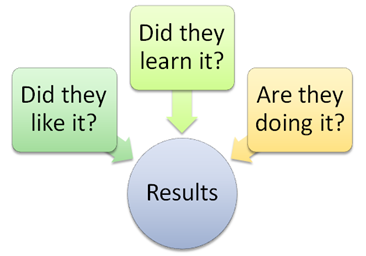John Kleeman, Questionmark was a speaker at the European SharePoint Conference 2011. Check out this insightful blog by John on the Effectiveness of Informal Learning.

John kleeman on the Effectiveness of Informal Learning
Lots of people ask me how you can use assessments to measure the effectiveness of informal learning. If people are learning at different times, in different ways and without structure, how do you know it’s happening? And how can you justify investment in social and informal learning initiatives?
The 70+20+10 model of learning is increasingly understood – that we learn 70% on-the-job, 20% from others and 10% from formal study. But as people invest in informal learning initiatives, a key question arises. How do you measure the impact? Are people learning? And more importantly, are they performing better?

Measuring reaction to assess the effectiveness of Informal Learning
In a presentation at the Learning Technologies conference in London in January, I suggested there are three areas in which to use assessments:
Did they like it?
You can use surveys to evaluate attitudes and reactions – either to specific initiatives or to the whole 70+20+10 initiative. Measuring reaction does not prove impact, but yields useful data. For example, surveys yielding consistently negative results could indicate initiatives are missing the mark.
You could also look at the Success Case Method, which lets you home in on individual examples of success to get early evidence of a learning programme’s impact. See here and here for my earlier blog posts on how to do this.
Of course, if you are using Questionmark technology, you can deliver such surveys embedded in blogs, wikis or other informal learning tools and also on mobile devices.
Did they learn it?
With informal learning, you also have the option of encouraging user-generated quizzes. These allow the author to structure, improve and explain his or her knowledge and engage and help the learner.
You can also use more formal quizzes and tests to measure knowledge and skills. And you can compare someone’s skills before and after learning, compare to a benchmark or compare against others.
Are they doing it?
Of course, in 70+20+10, people are learning in multiple places, at different times and in different ways. So measuring informal learning can be more difficult than measuring formal, planned learning.
But if you can measure a performance improvement, that is more directly useful than simply measuring learning. A great way of measuring performance is with observational assessments. This is described well in Jim Farrell’s recent post Observational assessments- measuring performance in a 70+20+10 world.
To see the Learning Technology presentation on SlideShare, click here. For more information on Questionmark technologies that can help you assess informal learning, see www.questionmark.com.











